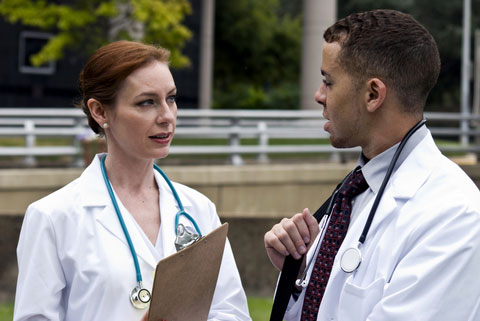Aligning Expectations

Dr. Chambers, a clinician researcher, accepted a medical school faculty position with the understanding that 20% of his time would be devoted to medical student education and 30% to patient care. The remaining 50% would be spent on research conducted with Professor Emerson, a successful midcareer researcher. The arrangement was that Dr. Emerson would engage Dr. Chambers in her existing projects and support his research time by adding him as key personnel to a few of her grants. Both Dr. Emerson and Dr. Chambers were enthusiastic about this mentored research arrangement at its inception. They shared some research interests, Dr. Chambers was eager to learn from a seasoned researcher, and Dr. Emerson needed an additional investigator to assist with her many projects.
The first 18–24 months went very well, with Dr. Chambers learning some new research techniques and co-publishing some important papers with Dr. Emerson. However, Dr. Chambers has realized that his real research passion is in a different area. He begins drafting proposals and seeking out new collaborations to support his own ideas. Professor Emerson learns about these activities from other colleagues and asks Dr. Chambers why he is spending his time on tangential endeavors. Dr. Chambers is surprised by his mentor's lack of enthusiasm for his initiative to develop his own research agenda.
Reflections
Q: How would you describe the situation that has arisen between Dr. Chambers and his mentor, Dr. Emerson?
A: A mismatch in expectations about the mentoring relationship seems to have developed. For example, both seem to differ on their understanding of how long Dr. Chambers is expected to continue working with Dr. Emerson; if and when he is expected to launch an independent research program; and what Dr. Emerson’s mentoring roles and responsibilities are beyond imparting her research knowledge and skills by assimilating Dr. Chambers into her research team.
Q: What steps might have been taken, and by whom, to prevent this situation from occurring?
A: Some of these expectations could have been more explicitly outlined in Dr. Chambers’ employment offer.
Once Dr. Chambers began pursuing alternative research avenues, he could have discussed his changing goals with his mentor. Based on how this conversation went, a decision could have been made to either find a new mentor or add an additional mentor to help Dr. Chambers make progress in his preferred research area.
Drs. Chambers and Emerson might have worked together at the start of their mentoring relationship to create an individual development plan (IDP). An IDP is a useful tool for setting career goals, annual milestones, and mentoring expectations. Periodic review and updating of an IDP (at least annually) could have stimulated important conversations between these two faculty members.
Q: What options do Drs. Emerson and Chambers have at this point in their relationship?
A: They may need to have a discussion, perhaps including the Department or Division Head, to redefine their working arrangement or bring closure to their mentoring relationship. It is important for academic units to have a process in place that encourages appropriate changes in mentorship, without this being perceived negatively by either partner.
Regardless of whether this particular mentoring relationship continues, Dr. Chambers would benefit from focused mentoring about his career goals and the expectations for advancement in his faculty track.

